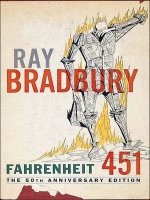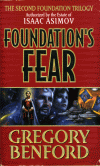Black Market memories is a story about a settlement many light years away from Earth named Jamestown. The residents can be individuals that had crippled bodies of some sort, then were given the opportunity to be “free” in a Stellar Unit (SU). The brain is scanned over a period of time then digitized and placed into a mechanical body. I would not classify these as cyborgs, but essentially AI that controls a ship of sorts. Some use the settlements as a base for research trips to find new worlds.
The story begins without any of the background I have described. My initial assumption was that these Stellars were humans in ships. The first few chapters were confusing without this background. It was obvious that the misdirection was intentional, but it didn’t sit well with me. Anyway, the opening chapters cover a kidnapping of an SU on her way back from a research mission. After this, Schramm gives us some background on two SU candidates and how they ended up in Jamestown. One was destined for a life of crime, the other to enforce the law.
The book’s title is derived from a limitation of the brain scanning process in creating a Stellar. The resulting AI has all of the existing memories and emotions of the original host. The problem is that they cannot experience new emotions. It seems to me that the title should have been Black Market Emotions, because it is obvious that the AI can create and store new memories, just not emotions. The Stellar can play back old memories and subsequently experience the emotions that happened at the time. The problem is that this gets old after a few thousand times.
For some reason, although the citizens of Jamestown are essentially AIs, Simgames are illegal. This is where the kidnapping comes in. To fuel an underground Simgame, Stellars are ambushed and captured for their memories. Emotion hungry subscribers for this underground game are addicted to this new source of memories/emotions.
This is where I have some serious problems with the story. Throughout the novel, characters are continually expressing emotions. They use words like fear, terror, love in conversation. Then later on they talk about longing to be able to feel emotion. Toward the end, I learn that Stellars can become suicidal due to emotional deprivation. That reasoning just doesn’t make sense. This book felt to me like it wanted to be a mystery. The conspiracy behind the Simgame was a mystery to the characters, but nothing was hidden from the reader.
Schramm has obviously spent a lot of time creating the various technologies that enabled the settlement of Jamestown. One thing I found interesting was Schramm’s use of CPU clock cycle rates for the Stellar Units. For humans in space travel, the problem is that it takes a long time to travel, so usually they are put into hypersleep of some sort. The SUs slow the CPU clock down so they don’t have to twiddle their thumbs while on a several hundred year trip. Arden, the law enforcement character, discovers that his SU is capable of much higher clock rates than anyone else. He can act much faster, giving him the advantage during his investigation.
For more information on David A. Schramm and his new book, please visit http://www.blackmarketmemories.com/


